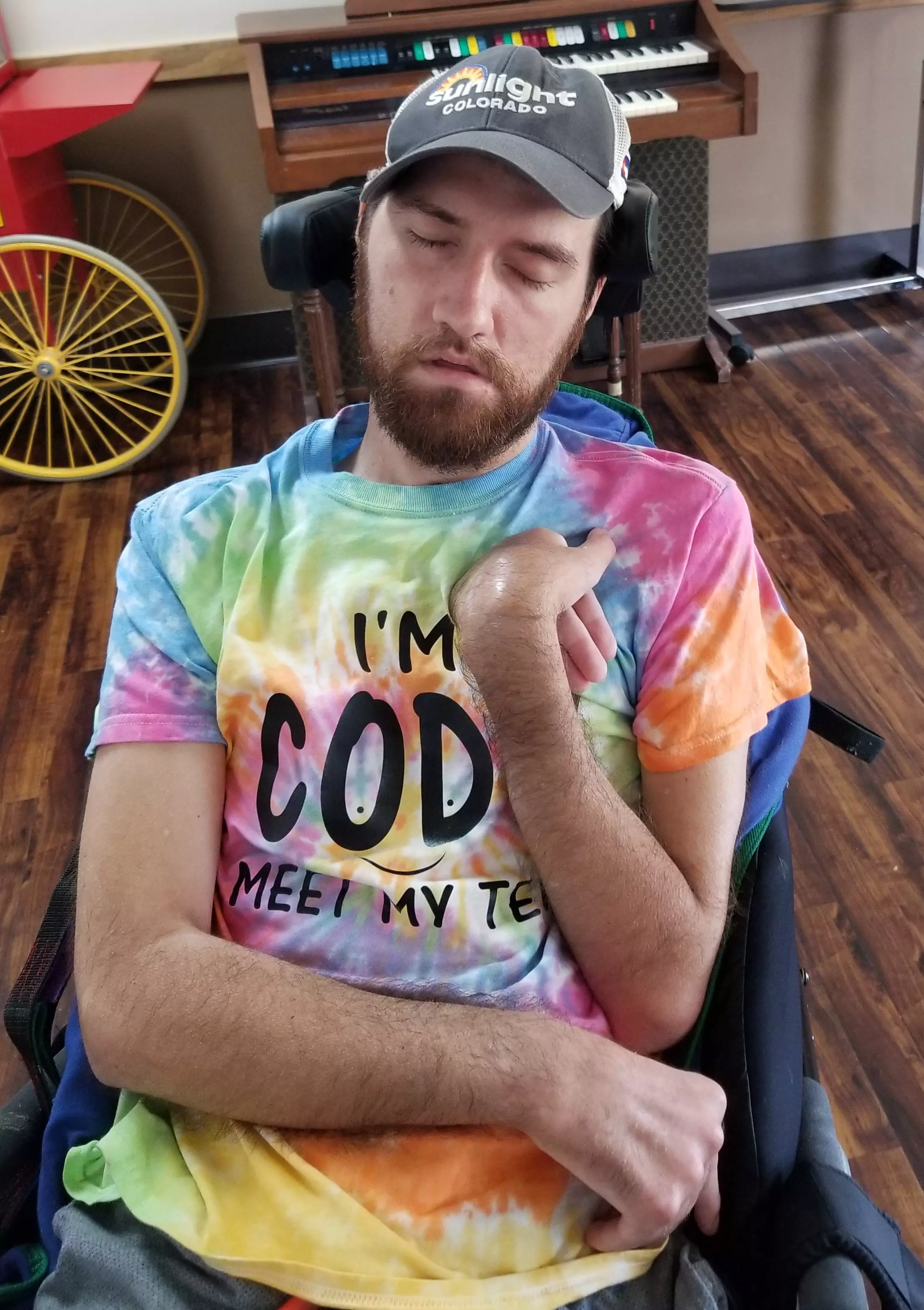October 24, 2023
Spasticity is a condition characterized by . It is a challenging condition that affects many individuals, often as a result of traumatic brain injuries (TBI) and other neurological disorders. Physical medicine and rehabilitation (PM&R) specialist, Sindhu Saji Jacob, MD – expert in neuro-rehabilitation – treats patients with spasticity with the goal of helping them , prevent further functional decline, and decrease pain. Two advanced treatment methods for treating spasticity include Botox(R) injections and intrathecal baclofen (injection into the spinal canal) delivered by an inserted pump. These options can be impactful for patients, like Cody Woolard, a total brain injury survivor whose life has been significantly improved through these treatments. 
Cody Woolard was living in New Mexico as a whitewater rafting guide in 2017. He and friends were visiting the beautiful city of Santa Fe when a drunk driver struck their vehicle head-on. Cody, the only survivor of the collision, was air-lifted to a hospital in Albuquerque for immediate treatment in the intensive care unit. Cody’s injuries were extensive and affected every part of his body. “As a result of his TBI, Cody has left sided weakness that affects his mobility and his ability to use his left arm. Despite previous treatments, such as oral medications, stretching and bracing, he was having severe pain that was impairing his mobility and self-care," explained Dr. Jacob.
Botox Injections: Precise and Targeted Relief
Botox injections have proven to be a valuable tool in managing spasticity for Cody and others facing similar challenges. Administered every three months, these injections provide targeted relief by temporarily relaxing the affected muscles. This precision is particularly beneficial when treating specific muscle groups, allowing individuals like Cody to regain control without sacrificing their overall muscle function. In this case, Cody receives Botox injections every three months.
Intrathecal Baclofen Pump: Customizable Long-Term Relief
In cases where spasticity is severe and widespread, as it was for Cody, the intrathecal baclofen pump becomes an essential option. A baclofen pump is a small machine inserted under the skin on one side of the abdomen near the hip bone. This device delivers a small amount of baclofen, a muscle relaxer, directly into the spinal canal, offering continuous relief. The pump's dosage can be tailored to meet the specific needs of each patient. With a capacity of up to 40cc, it provides a long-term solution for managing spasticity.
While a baclofen pump provides significant relief, it is crucial to recognize that the baclofen pump requires diligent maintenance. Regular monitoring and refilling are essential to ensure uninterrupted treatment. Failing to maintain the pump regularly can lead to withdrawal symptoms, which can be severe and disruptive for patients.
Dr. Jacob cautions, "The pump has a capacity to hold 40cc of the medication. Depending on the dose that each patient is taking, the pump will need to be filled when the volume falls below a critical level. Failure to fill the pump can cause withdrawal symptoms for the patient, which can be serious.”
Improving Lives
In the words of Dr. Jacob, who has helped Cody and countless others on their journey to manage spasticity, "Effective management of spasticity is crucial for enabling patients who suffer from spasticity from cerebral or spinal origin to lead the best life possible." These advanced treatments empower individuals like Cody to regain control over their lives and offer hope for a brighter future. Cody’s journey demonstrates how Botox and baclofen pump treatments can be transformative. He has found significant pain relief, more mobility in his left arm, as well as an improved gait and speed.

Learn why patient's choose Washington University Orthopedics, request an appointment online or call (314) 514-3500.